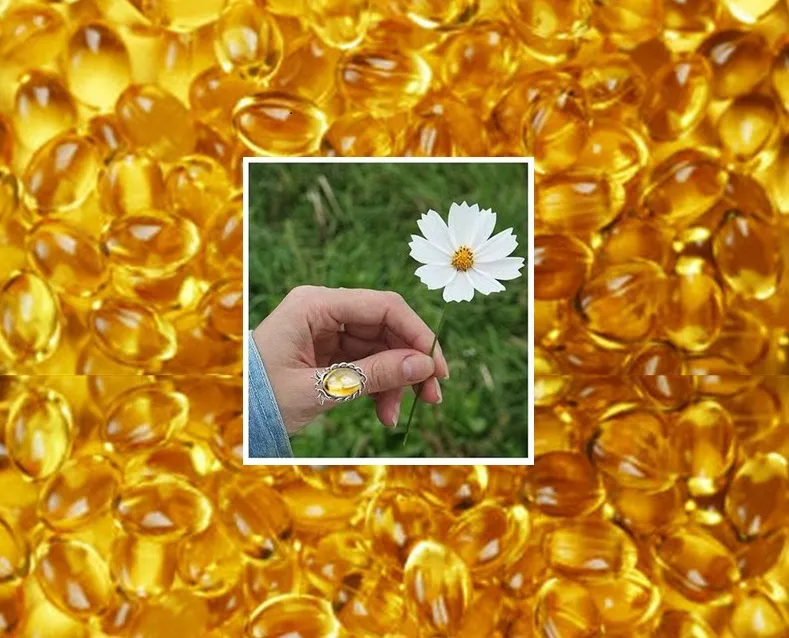Vitamin D3 The Diamond of Vitamins
Since there have been so many viral outbreaks in recent years you would think more would be said about Vitamin D3. Vitamin D3, in my opinion, is the diamond of vitamins or the most precious to the health of the human body.
To understand why, one should have a clear understanding of what Vitamin D3 is; where it comes from; and how it functions in the body. So, let’s start with what Vitamin D3 is. It is a prohormone also known as cholecalciferol, viosterol, ergosterol, or the sunshine vitamin. Vitamin D3 has the molecular structure of a steroid and can be derived from the sun, food, or supplementation. Vitamin D3 has many functions in the body: It is responsible for over 3000 immune functions; It carries nutrients through cell walls; It improves mood; It hardens bones; It manages calcifications in the body; it plays a role in the management of autoimmune disorders; along with many other traits some of which will be discussed in this article.
Vitamin D3 is in the fat-soluble vitamin family along with A, E, and K. It mainly comes in two forms. Most common are D2 (ergocalciferol) and D3 (Cholecalciferol). Vitamin D3 is largely man-made and added to foods such as cows’ milk, soy milk, orange juice, cereal, and other foods labeled “fortified with Vitamin D3. It is not good to get too many foods fortified with D because studies have shown that milk fortified with Vitamin D will deplete the body of magnesium which makes me think it could also cause depletion of other minerals in the body and perhaps other foods that are fortified can have the same effect.
Vitamin D3 (the more natural form) is synthesized in the skin of humans due to sun exposure. The 7-dehydrocholesterol is converted to Vitamin D3. Please note wearing sunscreen can diminish the amount of Vitamin D3 produced by the sun’s rays. One should only use sunscreen when they know they are at risk of sunburn. Vitamin D3 is also consumed in the diet via the intake of plant and animal foods. Mushrooms are the only plant that provides Vitamin D3 in the diet. Take note, if mushrooms are placed in the sun for an hour before eating them it raises the level of Vitamin D3 they can provide. The most common foods with Vitamin D3 are fatty fish including Salmon, Mackerel, Sardines, Red Meat, Egg Yolks, and Liver.
Vitamins D2 and D3 are both available in supplement form. Supplements can vary from 400 IU (10 mcg) to 10,000 IU (250 mcg). It’s advisable to have your Vitamin D3 level checked seasonally since the amount of time you can spend in the sun will impact your body’s level of Vitamin D3. The amount you need to take should be determined by the level shown on your blood test. Each person’s ability to absorb nutrients is personal to the health of their receptors.
Vitamin D3 supplements can be taken in several ways. When taken orally it is absorbed through the intestinal walls. Vitamin D3 comes in gelcaps, capsules, liquid, chewable, tablets, IV, injectable and liposomal forms. Although this is the most common way of taking Vitamin D3 it can also be taken sublingually (through receptors under the tongue); by placing drops of Vitamin D3 in the nose, and topically by rubbing liquid forms on the skin.
I believe Vitamin D3 is the most important supplement to take. Many people are Vitamin D resistant and don’t know it. In the case of Vitamin D resistance, higher levels may need to be taken to improve blood levels. Many people know that Vitamin D increases the body’s ability to absorb calcium and phosphorus, but did you know? Vitamin D helps move nutrients through cell walls and it’s responsible for more than 3000 immune functions. Vitamin D3 can activate sleep hormones; improve insulin resistance; strengthen muscles; harden bones; regulate calcium; create hypercalcemia (the action of removing calcium from soft tissue); prevent rickets and bone spurs; help prevent or reverse autoimmunity; activate over 266 genes; strengthen muscles; promote good oral hygiene; reduce symptoms of irritable bowel syndrome; reduce seasonal depression known as SAD; reduce complications in pregnancy by lessoning the risk of gestational diabetes, preeclampsia, and pre-term delivery, and many others.
Cofactors are proteins that help nutrients work properly. Vitamin D3 bound to a cofactor is essential for its many biological functions. Many cofactors can be derived from dietary nutrients and others need to be taken in supplement form. The main cofactors for Vitamin D3 are K2, Magnesium, vitamin A, Zinc, Omega-3, boron, and calcium. The cofactors needed by an individual are dependent on the outcome needed. I recommend the minimum of K2 be taken as a cofactor for Vitamin D3. K2 is a fat-soluble vitamin that is produced in the protein of animals when they eat grass.
K2 comes in several forms. It’s my opinion that the best form is the MK-7 or Menaquinone 7 form. When taken with Vitamin D3, K2 eliminates the toxicity of Vitamin D3 by activating calcium proteins and sending them to teeth and bones. The danger of Vitamin D3 is the creation of hypercalcemia because misplaced calcium will calcify whatever it lands on when the proteins are not activated. This can cause clogged arteries, hardening of the arteries, bone spurs, calcium deposits, gall stones and kidney stones, etc. Remember hypercalcemia is the action of Vitamin D3 removing calcium from places in the body where it doesn’t belong. K2 activates the calcium proteins sending it to teeth and bone and eliminating hypercalcemia.
There are so many facets of what Vitamin D3 does for the body that I couldn’t mention them all in this article. But now you can see some of them and why I call Vitamin D3 the diamond of vitamins.

